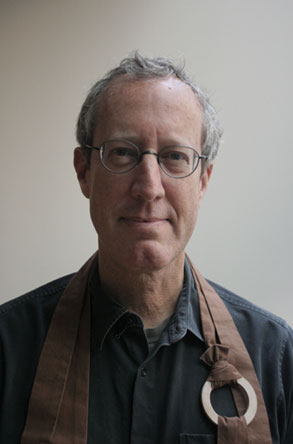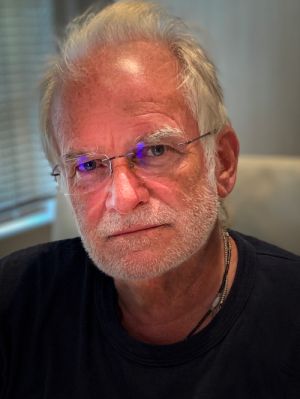Psychoanalysis is a set of theories and therapeutic techniques that deal in part with the unconscious mind, and which together form a method of treatment for mental disorders. The discipline was established in the early 1890s by Sigmund Freud, whose work stemmed partly from the clinical work of Josef Breuer and others. Freud developed and refined the theory and practice of psychoanalysis until his death in 1939. In an encyclopedia article, he identified the cornerstones of psychoanalysis as "the assumption that there are unconscious mental processes, the recognition of the theory of repression and resistance, the appreciation of the importance of sexuality and of the Oedipus complex." Freud's students Alfred Adler and Carl Gustav Jung developed offshoots of psychoanalysis which they called individual psychology (Adler) and Analytical Psychology (Jung), although Freud himself wrote a number of criticisms of them and emphatically denied that they were forms of psychoanalysis. Psychoanalysis was later developed in different directions by neo-Freudian thinkers, such as Erich Fromm, Karen Horney, and Harry Stack Sullivan.

Sándor Ferenczi was a Hungarian psychoanalyst, a key theorist of the psychoanalytic school and a close associate of Sigmund Freud.
Integrative psychotherapy is the integration of elements from different schools of psychotherapy in the treatment of a client. Integrative psychotherapy may also refer to the psychotherapeutic process of integrating the personality: uniting the "affective, cognitive, behavioral, and physiological systems within a person".
Relational psychoanalysis is a school of psychoanalysis in the United States that emphasizes the role of real and imagined relationships with others in mental disorder and psychotherapy. 'Relational psychoanalysis is a relatively new and evolving school of psychoanalytic thought considered by its founders to represent a "paradigm shift" in psychoanalysis'.
Interpersonal psychoanalysis is based on the theories of American psychiatrist Harry Stack Sullivan (1892–1949). Sullivan believed that the details of a patient's interpersonal interactions with others can provide insight into the causes and cures of mental disorder.
Stephen A. Mitchell was an American clinical psychologist and psychoanalyst. His book with Jay Greenberg, Object Relations in Psychoanalytic Theory (1983), became a classic textbook in graduate schools and post-graduate institutions, providing a general overview and comparison of several psychoanalytic theories. He was considered a leader of relational psychoanalysis. Mitchell helped to create the Relational Track of the New York University Postdoctoral Program in Psychotherapy and Psychoanalysis.

Vamık D. Volkan, M.D., DFLAPA, FACPsa, is a Turkish Cypriot psychiatrist, internationally known for his 40 years work bringing together conflictual groups for dialogue and mutual understanding. Among his many other honours, he is the president emeritus of International Dialogue Initiative (IDI).
A therapeuticalliance, or working alliance, is a partnership between a patient and his or her therapist that allows them to achieve goals through agreed-upon tasks.
Robert S. Wallerstein was a prominent German-born American psychoanalyst. He headed the Psychotherapy Research Project of the Menninger Foundation and was president of the International Psychoanalytical Association.
Robert D. Stolorow is a psychoanalyst and philosopher, known for his works on intersubjectivity theory, post-Cartesian psychoanalysis, and emotional trauma. Important books include: Faces in a Cloud, Structures of Subjectivity, Psychoanalytic Treatment: An Intersubjective Approach (1987), Contexts of Being (1992), Working Intersubjectively (1997), Worlds of Experience (2002), Trauma and Human Existence (2007), and World, Affectivity, Trauma: Heidegger and Post-Cartesian Psychoanalysis (2011).
The term "intersubjectivity" was introduced to psychoanalysis by George Atwood and Robert Stolorow (1984), who consider it a "meta-theory" of psychoanalysis. Intersubjective psychoanalysis suggests that all interactions must be considered contextually; interactions between the patient/analyst or child/parent cannot be seen as separate from each other, but rather must be considered always as mutually influencing each other. This philosophical concept dates back to "German Idealism" and phenomenology.
Philip M. Bromberg was an American psychologist and psychoanalyst who was actively involved in the training of mental health professionals throughout the United States.

Barry Magid is a psychoanalyst and Zen teacher whose life and work have been on the forefront of a movement to integrate Western psychology with Eastern spiritual practices. He teaches at the Ordinary Mind Zendo in New York City. OMZ is part of the Ordinary Mind Zen School, a network of independent Zen centers established by Charlotte Joko Beck and her Dharma Successors in 1995.
Kenneth A. Frank is an American clinical psychologist and psychoanalyst, and co-founder of the National Institute for the Psychotherapies in New York City, where he is Director of Training. A faculty member of the Columbia University College of Physicians and Surgeons from 1974 to 2009, he was Clinical Professor in Psychiatry from 1996 to 2009. He received his MA (1964) and PhD (1967) in Clinical Psychology from Columbia University.

Barnaby B. Barratt is a radical psychoanalyst, specialist in human sexuality, somatic psychologist, human rights activist and practitioner of meditation in the Dharmic traditions of tantra. He has lived in England, India, USA and Thailand and he currently lives and practices in Johannesburg, South Africa. He is Director of Studies at the Parkmore Institute.
Jon Mills is a Canadian philosopher, psychoanalyst, and clinical psychologist. His principle theoretical contributions have been in the philosophy of the unconscious, a critique of psychoanalysis, philosophical psychology, value inquiry, and the philosophy of culture. His clinical contributions are in the areas of attachment pathology, trauma, psychosis, and psychic structure.

Jeremy David Safran was a Canadian-born American clinical psychologist, psychoanalyst, lecturer, and psychotherapy researcher. He was a professor of psychology at the New School for Social Research, where he served for many years as director of clinical training. He was also a faculty member at New York University's postdoctoral program in psychoanalysis and The Stephen A. Mitchell Center for Relational Studies. He was co-founder and co-chair of The Sandor Ferenczi Center at the New School for Social Research. In addition he was past-president of The International Association for Relational Psychoanalysis and Psychotherapy.

Galit Atlas is an Israeli-American psychoanalyst best known for her rethinking of the place of sexuality and desire in contemporary theory and practice. Her new and innovative work on emotional inheritance explores the ways our ancestors' experiences shape our lives.
Jay R. Greenberg is a psychoanalyst, clinical psychologist and writer. He holds a PhD in Psychology from New York University. He is a Faculty Member of the William Alanson White Institute, where he is also a training analyst and supervisor.
Robin S. Brown is a psychoanalyst and academic. His work has been associated with a “philosophical turn” in psychoanalysis, and has received interdisciplinary attention in the fields of psychoanalysis, analytical psychology, and transpersonal psychology. He is the recipient of an award from the American Board and Academy of Psychoanalysis for his book, Psychoanalysis Beyond the End of Metaphysics: Thinking Towards the Post-Relational (Routledge). Joseph Cambray, president of the International Association of Analytical Psychology, described the book as: "A powerful, incisive critical analysis of the state of contemporary psychoanalysis"; while Lewis Aron referred to the book as "a penetrating and sophisticated critique"





